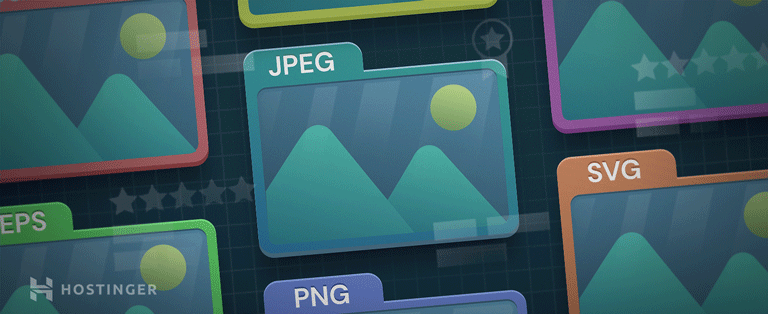Do you want to know what is the best image format to use on your website? Each image format has its own characteristics, so it is important that you choose the correct format based on how you want to use it.
In this post, we will explain everything you need to know to choose the best image format for your website.
3 Major Image Formats That You Should Use
These are the three most common image formats that we will discuss so that you can choose the best one for your site.
- Joint Expert Group on Photography (JPEG)
- Portable Network Graphics (PNG)
- Graphics Interchange Format (GIF)
Alright, let’s take a look at the similarities and main differences between JPEG, PNG, and GIF.
Joint Photographic Expert Group (JPEG)
JPEG is a very common image file format used by almost every website, and the best part is that it can maintain reasonable image quality even when images are compressed to reduce overall image file size.
JPEG uses a lossy compression method and ensures that images are as small as possible and load quickly when someone wants to view them. Even when compressed, JPEG can display millions of colors in the image.
Here’s a quick example:

However, JPEG is not preferred for screenshots and images with minimal color due to the quality of the images.
Portable Network Graphics (PNG)
PNG is another excellent image format that supports millions of colors. It is better for screenshots because PNG offers much better text readability than JPEG.
You can easily create banners, infographics, screenshots with clear text and images and save them in PNG format with little loss of visual quality. In fact, PNG is perfect when you only have two or three colors in the image.
Best of all, PNG provides useful transparency when creating logos and icons.
Graphic interchange format (GIF)
GIF is primarily used for low-resolution video clips and animations. The file size is small as it only supports up to 256 colors.

This means that if you are creating a GIF with a lot of colors, it may come out blurry. Also, GIFs can negatively affect page load time as they tend to load after all other assets on the page.
Choose the Best Image Format
For many websites, including e-commerce stores, JPEG or PNG are an excellent choice. However, the best practice is to maintain a format throughout the site to aid design consistency. GIFs are generally reserved for adding light animations.
Choosing between JPEG and PNG is often a difficult decision.
JPEG offers high compression for image data and offers much smaller image sizes with little loss of visual quality for images with many colors.
This makes it a great format for photos that contain a lot of detail. You will find JPEG on portfolio websites and eCommerce stores due to performance increase.
On the other hand, if image details are important to you, PNG should be the format of choice.
The images retain almost all the details even after compression, and the file sizes are almost similar to JPEGs.
We hope this post has helped you choose the best format for images on your site.
You can also check how to name your image files for SEO in WordPress and write alt text for images.
